As we age, our bodies don’t respond to the same exercises in the same way. The risk of injury goes up, recovery takes longer, and the pressure to stay strong can feel more intense than ever. But staying in shape after 40 doesn’t mean sticking to the same old routines—especially when they involve risky exercises like the bench press, squat, or deadlift.
You’ve probably heard the common fitness advice: if you want to build serious muscle, you must stick to the “Big 3” lifts. But that’s not necessarily the case—especially for men over 40. With the right approach, you can achieve strength and muscle without risking injury.
Welcome to the “Strength Without Sacrifice” philosophy—where joint health, longevity, and functional fitness take priority over ego-driven lifts like the bench press and deadlift.
FAQs Why You Shouldn’t Bench Press and Is Deadlift Overrated
1. Why shouldn’t I bench press after 40?
The bench press places significant strain on the shoulders, making it a high-risk exercise for men over 40. Safer alternatives like dumbbell presses or weighted dips provide similar results while reducing the chance of shoulder impingements or rotator cuff injuries.
2. Is the deadlift overrated for building muscle?
Yes, for many men, especially those over 40. While the deadlift targets multiple muscle groups, safer alternatives like the trap bar deadlift or Romanian deadlift are just as effective for building strength and muscle without putting unnecessary stress on the lower back.
3. Can I still build muscle without the Big 3 lifts?
Absolutely! The “Strength Without Sacrifice” philosophy focuses on safer exercises, such as dumbbell presses, trap bar deadlifts, and leg presses, that are equally effective for building muscle while protecting your joints and long-term health.
4. What are the best alternatives to the Big 3 lifts?
For each lift:
- Bench press: Dumbbell presses, weighted parallel bar dips
- Deadlift: Trap bar deadlift, Romanian deadlift, hyperextensions
- Squat: Leg press, dumbbell lunges, Bulgarian split squats
5. Do I need to squat to increase testosterone?
Not necessarily. While squatting does increase testosterone, so do other compound exercises like the leg press, pull-ups, or weighted dips. The hormonal response is driven by intensity and muscle engagement, not just the specific exercise.
6. Can I build a great chest without the bench press?
Yes! Dumbbell presses, parallel bar dips, and machines like the pec deck allow for a greater range of motion, better muscle activation, and less strain on the shoulders, making them excellent substitutes.
7. Is the Smith machine a good alternative for the Big 3 lifts?
No. The Smith machine restricts natural movement, leading to unnatural strain on joints and reduced muscle engagement. Free weights or alternative exercises offer better results with less risk of injury.
Why You Shouldn’t Bench Press and the History of the Big 3 Lifts
The bench press, deadlift, and squat have long been considered essential exercises for anyone looking to build serious muscle. Known as the Big 3 lifts, they’ve been used by bodybuilders, athletes, and powerlifters for decades.
But just because these exercises are iconic doesn’t mean they’re ideal for everyone—especially men over 40. Why you shouldn’t bench press? The bench press, for example, puts tremendous strain on the shoulders, a joint particularly vulnerable to injury as you age.
Historically, the Big 3 lifts gained popularity in the mid-20th century as bodybuilding and powerlifting became more mainstream. However, the fitness needs of a man in his 20s or 30s aren’t the same as a man in his 40s. It’s time to rethink their place in your routine. I certainly placed to much kudos on these exercises during my early years of making many muscle and strength building mistakes.
Squats
The squat is one of the oldest and most fundamental human movements. Its origins as a formal exercise can be traced back to ancient civilisations, where physical fitness was an integral part of daily life and military training.
The squat gained prominence in the modern fitness world during the 20th century, largely through the influence of weightlifting and bodybuilding.
The squat was popularised by early strength athletes like Milo of Croton, a 6th-century BC wrestler known for his extraordinary feats of strength. Legend has it that Milo walked daily with a newborn calf, which eventually grew into a bull. As the calf grew, so did Milo’s strength, offering perhaps one of the earliest examples of progressive overload.
In the 1950s and 1960s, powerlifting emerged as a competitive sport, further cementing the squat’s importance. The exercise became a key component of powerlifting competitions, along with the deadlift and bench press.
Deadlifts
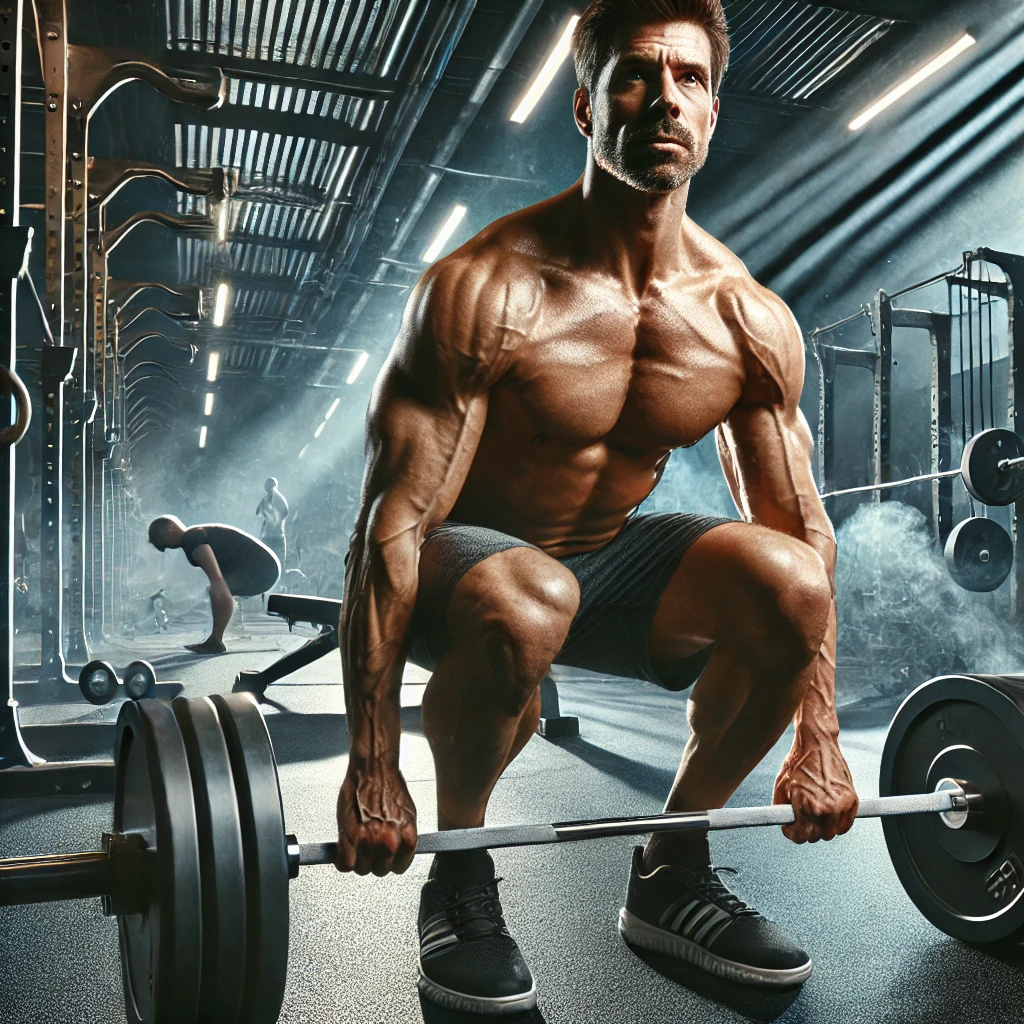
The deadlift involves lifting a weight from the ground to hip level. Its roots can be traced back to ancient civilisations where lifting heavy objects was a part of daily life and military training.
Like the squat, the deadlift was formalised as an exercise in the 20th century through the efforts of early strength athletes and weightlifters. The term “deadlift” refers to lifting a “dead” or stationary weight, as opposed to weights that are already in motion.
Strongmen like Hermann Goerner demonstrated incredible feats of strength using deadlifts, showcasing the exercise’s potential for building immense power. Goerner, known for his grip strength and unconventional lifting methods, helped popularise the deadlift.
Today, the deadlift remains a key lift in powerlifting competitions, known for its ability to target the posterior chain, including the hamstrings, glutes, lower back, and traps.
Bench Press
The bench press, a more modern addition to strength training, emerged in the early 20th century. While variations of pressing movements had been practiced for centuries, the bench press as we know it today began to take shape in the 1930s and 1940s.
The bench press gained widespread popularity in the 1950s and 1960s, thanks to the rise of bodybuilding and powerlifting. Pioneers like Arnold Schwarzenegger and Reg Park showcased impressive chest development and pressing strength, inspiring countless individuals to incorporate the bench press into their routines.
Today, the bench press is a fundamental component of most strength training programs, often seen as a benchmark of upper body strength.
Is Deadlift Overrated? Busting the Myths Around the Big 3
The modern-day online fitness community truly shines when debating this topic, being its true-to-form dogmatic and argumentative self.
Many preach that the only way to build a great physique is to squat, deadlift, and bench press. These Big 3 zealots believe you don’t deserve to be lifting if the Big 3 aren’t included within your routine.
Some rather large claims exist when covering the Big 3 lifts:
1. Squatting Increases Testosterone and HGH (Human Growth Hormone)
You’ll find many claims that the Big 3 lifts (not just squatting) increase testosterone, and if you don’t include them you’re wasting your time. The truth is, all intense physical activity increases testosterone levels. This generally occurs as a result of higher intensity and lactic acid build-up and a combination of activating multiple muscle groups (compound exercises).
Squatting increases testosterone—so does a leg press, a chin-up, a dumbbell press, etc. There’s nothing magical about the Big 3 when hunting a specific testosterone or HGH boost.
2. You Can’t Build an Impressive Chest Without a Bench Press
I’m about to rag on the bench press. Here’s a link to a great article I’m about to summarise (thoughts being totally aligned):
The Truth About the Bench Press – Better Ways to Build Chest
Essentially, the heavier you go, the greater the chance of the bench press transforming into a triceps exercise.
When lowering the bar, you don’t lower enough to fully activate the whole chest (you can get lower with dumbbells).
The bench press is far from a bad exercise; it’s just misunderstood. Vince Gironda (a guru in days gone by) hated the bench press for chest growth and believed there to be far superior exercises.
If you want to get strong at the bench press, continue to bench press. You can build an impressive chest with dumbbells and (in my opinion—the real upper body squat exercise) parallel bar dips. If we venture back to Exercise 101 basics: if you’re stimulating a muscle enough, it will grow. The bench press isn’t the only chest stimulation exercise, and in some cases, it may be inferior.
3. Deadlifting is the Best Exercise for the Back and Works Every Muscle in the Body
False. The upper back and lats only work isometrically when deadlifting. They don’t go through a full range of motion during deadlifting. To develop your back muscles, there are superior exercises, such as weighted chin-ups and rows.
The deadlift is a strenuous exercise that rapidly fatigues the body. Granted, there are different versions of it, but generally, you’ll be better suited to other back exercises if your goal is physique development as opposed to a goal of being great at deadlifting.
The claim that deadlifts work every muscle in your body is plain false. There may be a degree of tension across the whole muscular system, but try only deadlifting for a month and see what happens to your physique! Deadlifting is the best exercise if you’re planning to deadlift heavier!
Deadlifting is associated with a higher risk of lower back injuries, particularly due to improper form or overloading, which can lead to serious conditions such as herniated discs. Safer alternatives like the trap bar deadlift can reduce this risk while still targeting the posterior chain effectively.”
Source: PLOS ONE, systematic review of deadlift variations.
4. You Can’t Get Big Without the Big 3 Lifts, Look at Powerlifters
In another article, I break down 8 common fitness myths. The most pertinent point I raise is as follows:
Athletes don’t look like they do as a result of their sport; they do the sport because of their genetics.
To elaborate, you generally observe world-class strongmen and powerlifters on your television or in the media. Even a great local powerlifting athlete has great genetics for strength and power. These genetically blessed athletes would grow muscle on most strength-building plans, and their massive size and muscle isn’t only attributed to the Big 3 lifts.
Can you Reach Your Goals Without the Big 3 Lifts?
Absolutely, men over 40 can get ripped without the Big 3 lifts. The Strength Without Sacrifice philosophy offers effective alternatives that focus on building muscle and maintaining joint health without the high injury risks of these traditional lifts.
Why you shouldn’t bench press? Because the risk of shoulder injuries far outweighs the benefits, especially when alternatives like dumbbell presses or chest machines provide similar results with less strain.
Similarly, is deadlift overrated? For men over 40, safer alternatives like the trap bar deadlift or Romanian deadlift can help you build strength while minimising the risk of back injuries. These exercises focus on controlled movement and muscle engagement, which is far more effective for long-term health than simply lifting as much weight as possible.
Injuries for Men: Why You Shouldn’t Bench Press and Is Deadlift Overrated?
Injuries are a significant concern for men over 40, especially when performing the Big 3 lifts.
- Why you shouldn’t bench press: The bench press is notorious for causing shoulder impingements, particularly for older lifters. The repetitive motion, combined with heavy loads, can lead to inflammation, rotator cuff tears, or worse.
- Is deadlift overrated? Absolutely. The deadlift puts a significant strain on the lower back, and improper form only increases the risk of herniated discs, pulled muscles, and long-term back issues.
A review of injuries among powerlifters found that the shoulder is one of the most commonly injured areas during bench pressing, particularly in older lifters, due to the heavy loads and repetitive stress placed on the joint.”
Source: British Journal of Sports Medicine.
Alternatives to the Big 3 Lifts (With Workout Modifications)
Now that we know why you shouldn’t bench press and why deadlift is overrated, let’s explore safer and equally effective alternatives that focus on maintaining muscle without risking injury.
Bench Press Alternatives:
- Dumbbell presses (flat or incline): Allow for greater range of motion and less shoulder strain.
- Weighted parallel bar dips: Excellent for both chest and triceps development without putting undue stress on the shoulders.
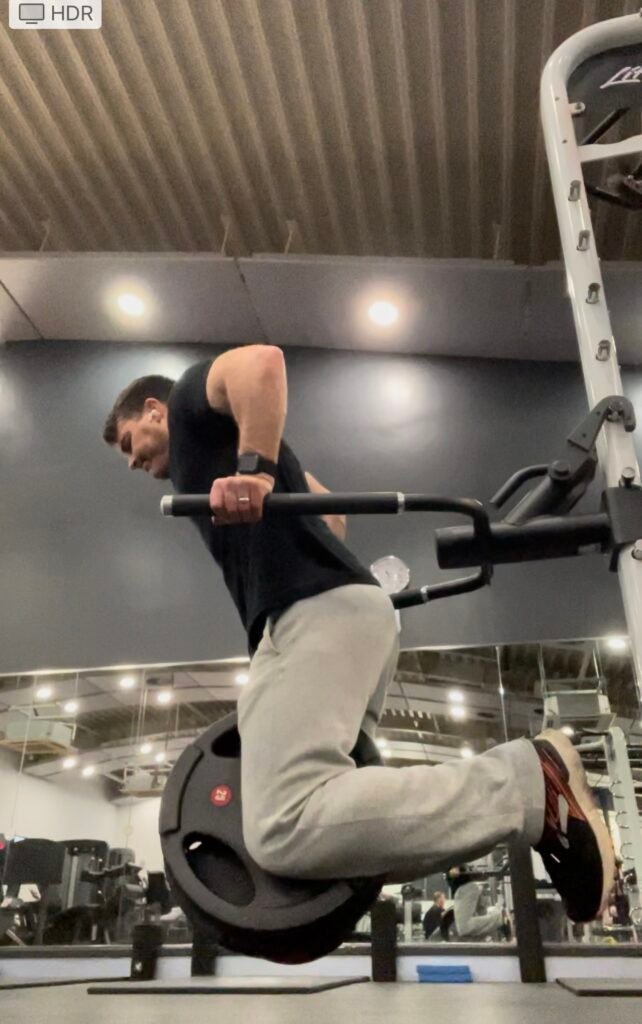
Yours truly performing a weighted parallel bar dip
Deadlift Alternatives:
- Trap bar deadlift: A safer alternative to traditional deadlifts, the trap bar deadlift shifts the load more evenly across the body, reducing strain on the lower back while still targeting the posterior chain.
- Romanian deadlifts: Focuses more on the hamstrings and glutes with a safer, controlled range of motion compared to conventional deadlifts.
- Weighted pull-ups: These exercises target the back without the lower back strain associated with heavy deadlifts. They also engage the biceps and core.
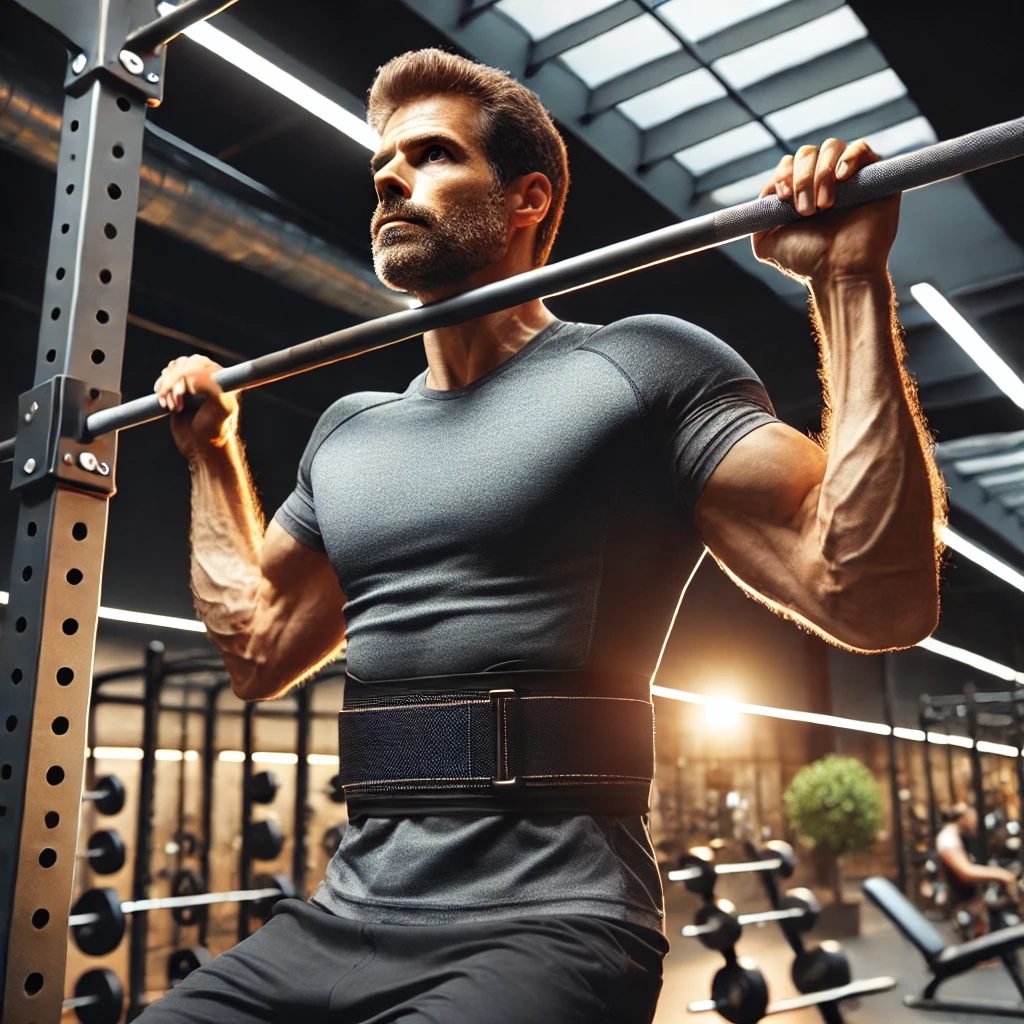
- Hyperextensions: An excellent exercise to strengthen the lower back without the risks associated with deadlifting. This exercise isolates the lower back and glutes, helping to prevent injury.
Squat Alternatives:
- Leg press: Protects the knees while still engaging the quads.
- Dumbbell lunges: A functional movement that builds leg strength without compromising joint health.
These exercises align with the Strength Without Sacrifice approach, allowing you to maintain muscle, strength, and fitness without pushing your body beyond its limits.
Expert Opinions and Scientific Studies on Lifting After 40
Research has shown that as we age, our testosterone levels, recovery times, and joint health change, making it essential to adjust our workout routines accordingly.
According to Dr. John Rusin, a specialist in functional training for older athletes, “Prioritising longevity in strength training is key after 40. Exercises that reduce joint strain and focus on controlled movement are far more beneficial than heavy, high-risk lifts like the deadlift or bench press.”
A study published in the Journal of Strength and Conditioning Research found that men over 40 who switched to joint-friendly alternatives experienced fewer injuries and maintained the same level of muscle mass compared to those who stuck with the Big 3 lifts.
My Smith Machine Hatred
Stay well away from the Smith machine alternatives. The Smith machine allows a barbell to move up and down within a fixed plane of motion. Squatting, bench pressing, and even deadlifting can be replicated within the Smith machine.
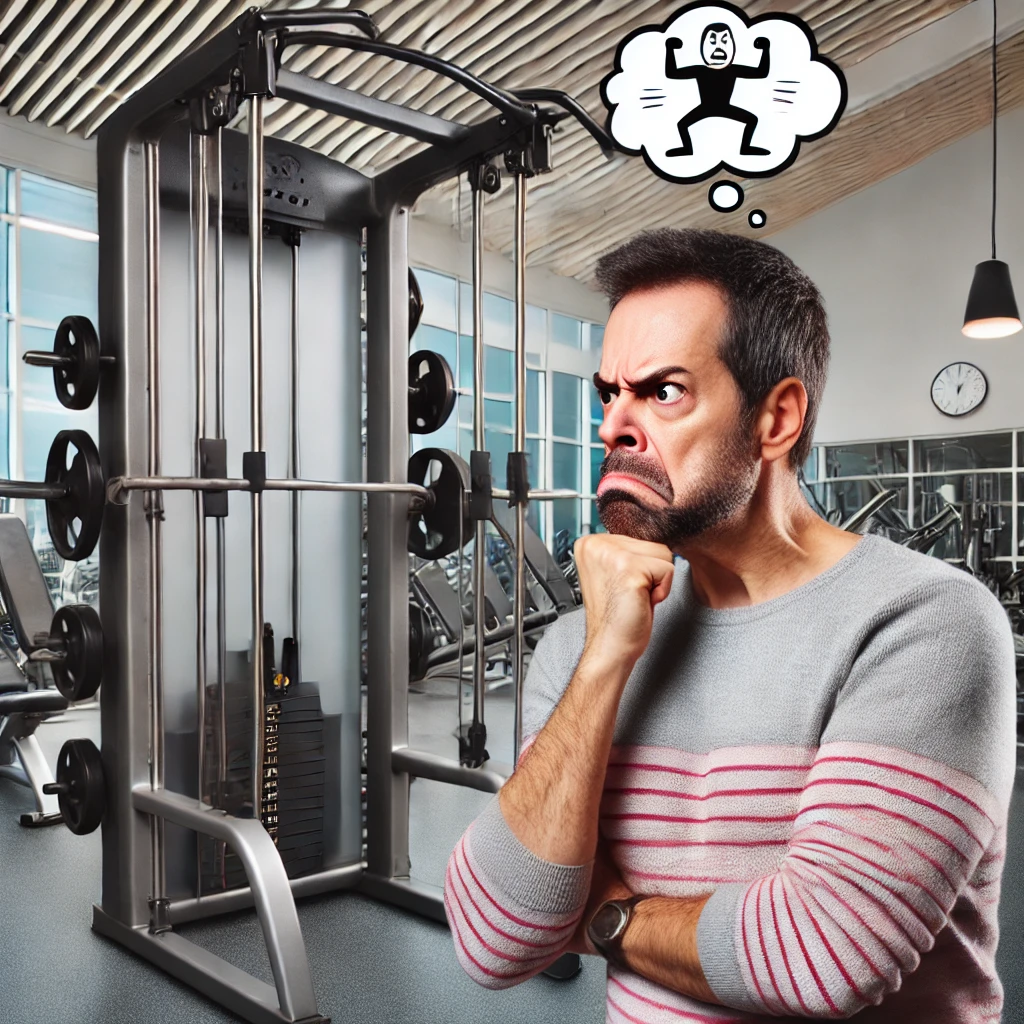
A false sense of belief exists that the Smith machine is safer than a free barbell version of these exercises. Logic dictates this could be the case, as you can easily rack the weight against the pins. It’s not.
Here’s why I absolutely hate the Smith machine:
- Stabilisation: Free weight movements have a great impact on your core and other stabilisation muscles. The Smith machine hides and potentially exacerbates muscle imbalances.
- Injury Risk: The fixed range of motion can increase injury risk. Your body naturally adjusts itself during free weight movements, ensuring the weight is lifted in the most natural way. With the Smith machine, you’re lifting a heavy load in an unnatural, fixed plane, increasing the chance of injury.
Do My Own Workouts Include the Big 3 Lifts?
Let me articulate this point. Learn to squat, deadlift, and bench press with flawless form, and they’re strong additions to your routine. The exercises are fantastic additions to a well-rounded program to achieve overall strength and muscular gains (with additional exercises).
However, I take issue with the zealots who claim you must include the Big 3 lifts to achieve your muscle-building and physique goals. Most people wish to develop a great physique and look good naked. You don’t need these exercises to achieve that goal.
If sports-specific training is required, then it makes sense to learn and incorporate the Big 3 lifts. Otherwise, don’t feel guilty about omitting them. Progressive overload matters, (bigger muscles are generally stronger) but ensuring that you’re feeling the muscle working via the mind muscle connection.
My current 3x weekly routine looks like this (don’t be fooled by time saving at the expense for muscle building – I promise you, you don’t need to spend hours in the gym for days on end to get results).
Workout A: Push and Abs (6-10 reps unless stated otherwise)
- Incline dumbbell press – 3 sets of 50kg
- Flat dumbbell press – 3 sets of 46kg
- Pec deck or flys – 3 sets with 12-15 reps
- Barbell shoulder press – 3 sets with 70kg
- Dips – 60kg attached to my waist
- Tricep rope extension – 3 sets of 12-15 reps
- Hanging leg raises – 3 sets of 20
- Ab wheel rollout – 3 sets of 20
- Press-ups – 1 set to absolute failure
Workout B: Pull and Legs (6-10 reps unless stated otherwise)
- Trap bar deadlift (low handles) – 3 sets of 380kg
- Weighted pull-ups – 3 sets with 30kg around waist
- Chin-ups (no weight) – 3 sets of 12-15 reps
- Dumbbell row – 3 sets of 46kg
- Barbell curl – 3 sets of 12-15 reps
- Leg press – 3 sets of 160kg for 12-15 reps
- Hamstring curls – 3 sets of 60kg for 12-15 reps
The higher rep exercises at the end of each workout are often swapped out and completed rest pause style.
Correct Rep Speed
A quick word on rep speed. Ensure that you’re lifting and lowering the weight slowly. Your speed doesn’t have to be super slow (although this can be effective), but stick to a 2 second up and 2 second down speed.
Key Takeaways
- Why you shouldn’t bench press: The risk of shoulder injuries far outweighs the benefits for men over 40.
- Is deadlift overrated: For many men over 40, the deadlift poses too much risk to the lower back and can be replaced with safer alternatives.
- Men over 40 can absolutely get ripped by focusing on safer compound movements and isolation work rather than relying on the Big 3 lifts.
- Adopting the Strength Without Sacrifice philosophy will allow you to stay fit, build muscle, and protect your joints without sacrificing long-term health.
Conclusion and Closing Thoughts
Don’t be drawn into the “You must squat, deadlift, and bench press for a great physique” dogma. If you’re working your body effectively, including mostly compound movements, some isolation exercises, and progressing with good form, then you’re golden.
If you’re working hard and resting/eating in accordance with your goals, you can develop an outstanding body without performing any of the Big 3 lifts.
For looking good, there are plenty of Big 3 lift alternatives. Deadlifting is the best exercise only if you wish to become great at deadlifting, and you can certainly build an impressive chest without the bench press. Squatting increases testosterone in line with other compound exercises, and you don’t need to stop muscle isolation work! And above all else…
Stay the hell away from the Smith machine!
As stated at the start, you’re welcome to contact me at any time, and I will do my best to get back to you ASAP.
I post 2-3 times a week and cover varied muscle building, health, fat loss, and lifestyle content. I’d be grateful for your email subscription to my site (you can find the option just below), and you’ll be immediately notified when I post/have exciting news to share.
Thanks very much for reading and chat soon,
Matt
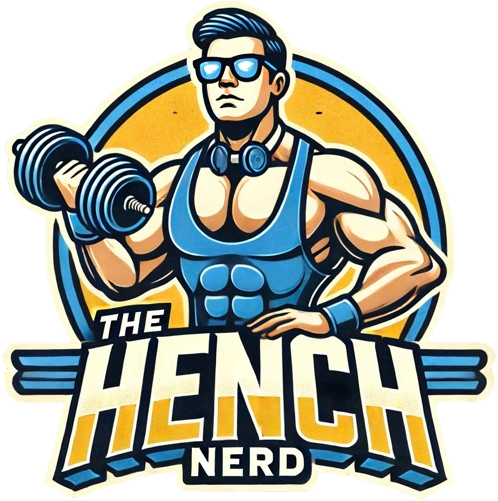
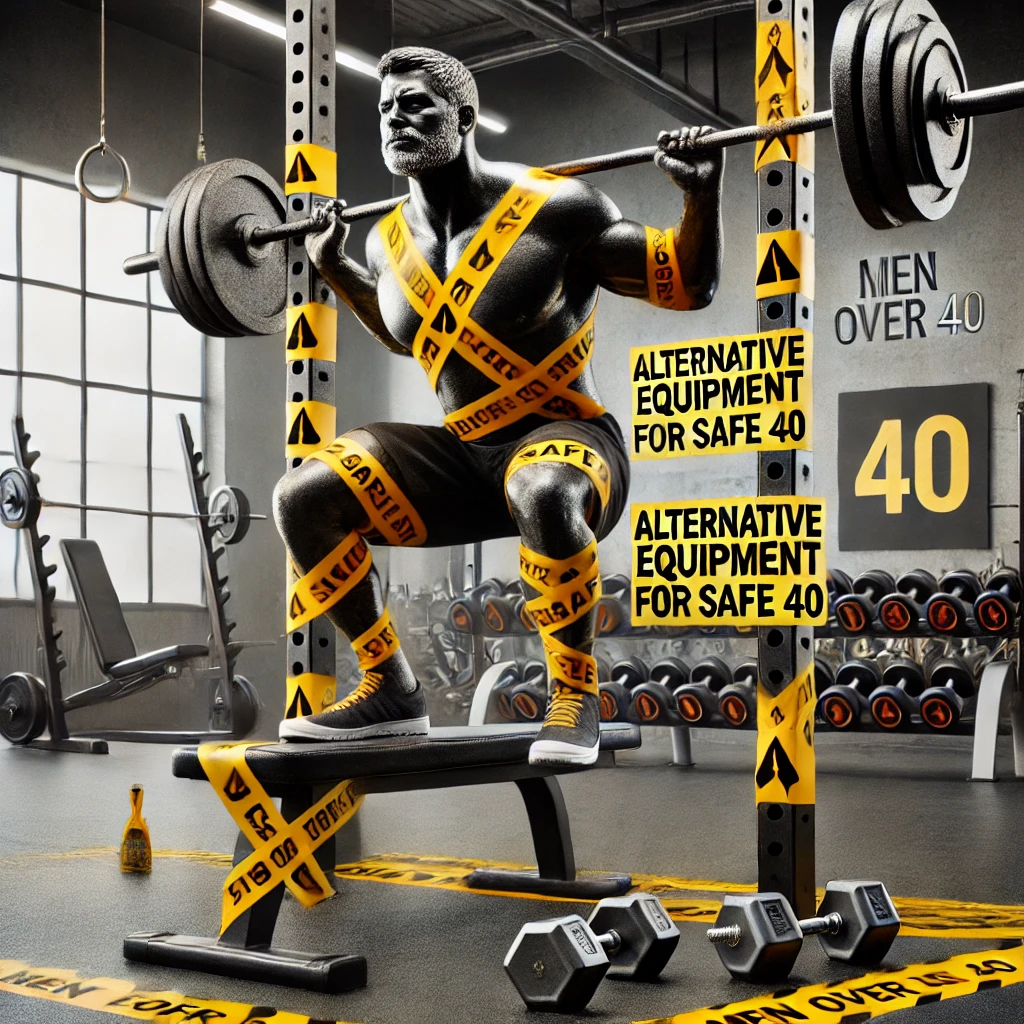
3 thoughts on “Why You Shouldn’t Bench Press, Squat, and Is Deadlift Overrated?”
Comments are closed.